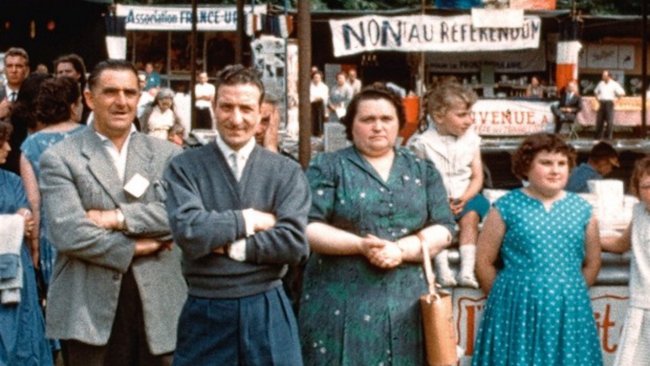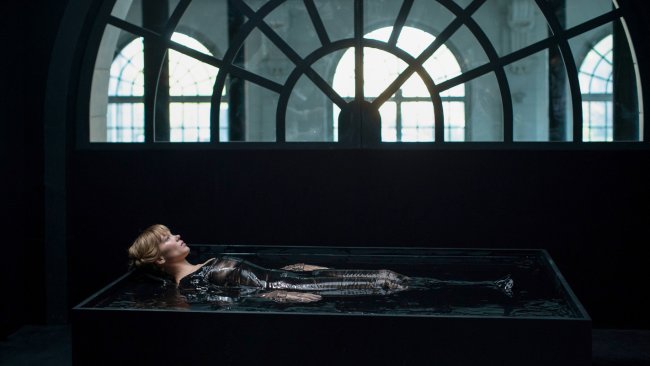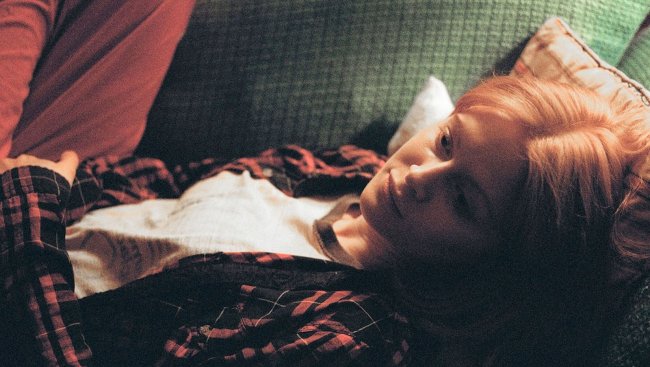Alex Prager
[…] The five films screened on the first floors of the Museum do not push us back to the cinematic origins of the photographic images but rather expand the already fully cinematic intuitions of the photographic image. In a way, the films display a second-degree cinema, a cinema of the cinematic.
[…] I would say that Prager’s work is most essentially a work on memory, on the artificiality of our memories, on the unreal, almost metaphysical flavour of any historical reconstruction.
Text: Giuseppe Di Salvatore
It is a sunny day in Le Locle, with plenty of snow, which makes the light reverberate. The room on the ground floor at the Musée des Beaux-Arts is flooded with this light, making Alex Prager’s already very bright photographic images even brighter. They are almost overexposed, with a clearly assumed Fifties/Sixties American colourful aesthetic, making use of the cinematic imagination of this epoch. They are akin to stills of non-existent movies, embodying or almost exaggerating cinematic imagination, through to its hyper-fictional core. The radicalisation of cinematic tropes is a methodological instrument in Prager’s artistic activity. Through highly staged photography, cinema is magnified as the authentic bearer of an epoch, which is obsessively visited by the artist – and obsessions are always vehicles of interesting and unfamiliar journeys.
The five films screened on the first floors of the Museum do not push us back to the cinematic origins of the photographic images but rather expand the already fully cinematic intuitions of the photographic image. In a way, the films display a second-degree cinema, a cinema of the cinematic. The journey into cinematic imagination goes further. In order to understand exactly where it goes, we should come back to this imagination and recognize its specificity. It is a designed imagination, where iconic elements are brought together, artificially collected, in order to embody the “typical” as it is selected by our memory. I would say that Prager’s work is most essentially a work on memory, on the artificiality of our memories, on the unreal, almost metaphysical flavour of any historical reconstruction. Prager’s filmic works force us to focus on the imaginative core of any philological reconstruction (that is, on the metaphysical core that inhabits the work of the historian). Imagination and authenticity are intertwined.
As viewers, we experience a sort of saturation of the imagination. Authors like Edward Hopper, William Eggleston or Alfred Hitchcock – that are recalled by Michael Govan’s introductory text of the catalogue of the exhibition – are conveyed but also exhausted. A triumph is already the starting point of an unavoidable erasure. The bright glory of the American “golden age” (California, Los Angeles and Hollywood included) is also the manifestation of its decadence, which is accompanied by the heavy sound of a grand orchestra for film music. In her accurate reconstructions, Prager shows the sinister features of this brightness, full of menace and fragility, whose recurrent witness and expression is always the figure of a solitary woman wandering at the perimeter of her own collapse. In her sunny cosmos, the break and the fall will emerge as constant themes, like the blinding consequences of excessive brightness.
…And we are back on the streets of Le Locle, covered by blinding sunny snow.
Info
Alex Prager | Silver Lake Drive | Exhibition | Musée des Beaux-Arts Le Locle | 3/11/2018-27/1/2019
First published: January 22, 2019







